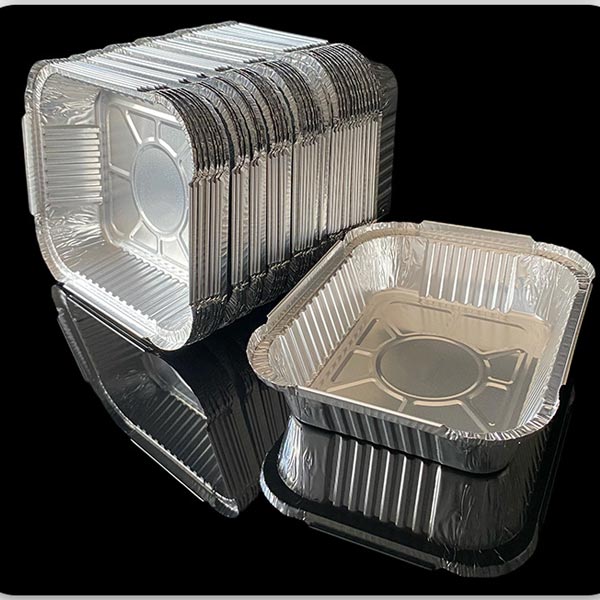Have you ever struggled to find a food container that balances durability, versatility, and environmental responsibility? The answer lies in a product often overlooked yet indispensable across industries: the rectangle foil container. Designed to meet rigorous demands, these containers combine advanced engineering with practical functionality. But what makes them stand out in a crowded market? Let’s dissect their core attributes and applications.
Rectangle foil containers are crafted from high-grade aluminum alloy, a material chosen for its unique density (ranging between 3%-4%). This specific density ensures optimal structural integrity while maintaining lightweight properties. Unlike bulkier alternatives, aluminum’s malleability allows precise shaping, enabling manufacturers to create containers with uniform wall thickness—critical for even heat distribution during cooking or freezing.
Aluminum’s thermal conductivity (237 W/m·K) outperforms plastics and glass, making these containers ideal for applications requiring rapid temperature transitions. Whether reheating frozen meals at 400°F or chilling desserts at -20°F, the material adapts without warping or leaching chemicals. This adaptability is further enhanced by non-reactive surface coatings, which prevent acidic or alkaline foods from compromising the container’s integrity.
From commercial kitchens to household pantries, rectangle foil containers serve diverse purposes. Below are three primary sectors where their impact is transformative:
To illustrate why rectangle foil containers dominate specific niches, consider this data-driven analysis:
| Feature | Aluminum Foil | Plastic | Glass |
|---|---|---|---|
| Max Temperature Resistance | 500°F | 250°F | 300°F |
| Recyclability | Infinitely recyclable | Limited cycles | Reusable but energy-intensive |
| Weight (per 500ml capacity) | 12g | 25g | 300g |
| Cost per Unit (bulk) | $0.08–$0.15 | $0.05–$0.10 | $0.50–$1.20 |
This table underscores aluminum’s superiority in high-heat scenarios and sustainability—a critical factor as global regulations phase out single-use plastics. While plastic remains cheaper upfront, foil’s lifecycle cost proves economical due to its recyclability and multi-functional use cases.
Q: Can rectangle foil containers be used in conventional ovens?
A: Absolutely. Their metallurgical composition ensures stability at temperatures up to 500°F, making them suitable for baking, broiling, and air frying. However, avoid direct contact with induction cooktops unless explicitly labeled as compatible.

Q: How do they impact food flavor and quality?
A: Aluminum’s non-porous surface prevents moisture loss, preserving food texture. For acidic dishes like tomato-based sauces, opt for containers with FDA-approved lacquer coatings to prevent metallic taste transfer.
Q: Are they truly eco-friendly?
A: Yes. Aluminum recycling requires 95% less energy than primary production. Post-consumer foil containers are reprocessed into new products within 60 days, creating a closed-loop system that minimizes landfill waste.
Recent advancements have expanded rectangle foil containers’ utility. For instance, embossed patterns on container bases improve grip and reduce slippage in automated packaging lines. Additionally, micro-perforations enable controlled steam release during microwave use, addressing historical limitations of metal in microwave ovens.
Another breakthrough involves hybrid designs. By integrating silicone lids with foil bases, manufacturers now offer airtight solutions that merge the benefits of both materials. These hybrids cater to niche markets like gourmet meal delivery services, where presentation and freshness are paramount.
Rectangle foil containers exemplify how material science meets practicality. Their optimized density, thermal resilience, and environmental profile position them as indispensable tools across sectors. As industries prioritize sustainability without compromising performance, these containers will continue to evolve—setting new benchmarks for packaging efficiency. Whether you’re a chef seeking reliable bakeware or a plant manager optimizing production workflows, understanding their capabilities ensures informed, future-proof decisions.